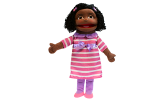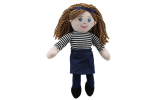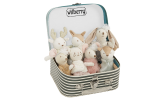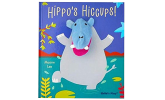- Home
- New
- ECO
- Elmer
- Paddington
- Hand Puppets
-
Paddington

-
Animal Hand Puppets

- Animal Set Hand Puppets
- African Animal Puppets
- Amphibian Hand Puppets
- Bear Hand Puppets
- Bird Hand Puppets
- Cat Hand Puppets
- Dinosaur Hand Puppets
- Dog Hand Puppets
- Dragon Hand Puppets
- Farm Hand Puppets
- Fox Hand Puppets
- Full Body Puppets
- Mice Hand Puppets
- Monkey Hand Puppets
- More Animal Puppets
- Mythical Hand Puppets
- Pet Hand Puppets
- Rabbit Hand Puppets
- Reptile Hand Puppets
- Sea Life Hand Puppets
- Wolf Hand Puppets
- Woodland Animal Hand Puppets
-
Character Hand Puppets

-
Monster Hand Puppets

-
People Hand Puppets

-
Puppets For Babies & Toddlers

-
Puppet Accessories

-
Paddington
- Finger Puppets
-
Animal Finger Puppet Sets

-
Bird Finger Puppets

-
Dinosaur Finger Puppets

-
Farm Finger Puppets

-
Garden Finger Puppets

-
Insect Finger Puppets

-
Mythical Finger Puppets

-
People Finger Puppets

-
Pet Finger Puppets

-
Sea Life Finger Puppets

-
Story Finger Puppet Sets

-
Vehicles & Character Finger Puppets

-
Wild Animal Finger Puppets

-
Wildlife Finger Puppets

-
Animal Finger Puppet Sets
- Soft Toys
-
All Wilberry Soft Toys

-
Wilberry Canopy Climbers

-
Wilberry Classics

-
Wilberry Collectables

-
Wilberry Comforters

-
Wilberry Dancers

-
Wilberry Dinosaurs

-
Wilberry Dolls

-
Wilberry Dressed Animals

-
Wilberry Eco Classics

-
Wilberry Eco Mini's

-
Wilberry Families

-
Wilberry Favourites

-
Wilberry Feathery Friends

-
Wilberry Friends

-
Wilberry Knitted

-
Wilberry Linen

-
Wilberry Mini's

-
Wilberry Pets In Baskets

-
Wilberry Picnic Bears - NEW

-
Wilberry Robots

-
Wilberry Snuggles

-
Wilberry Super Heroes

-
All Wilberry Soft Toys
- Time For Stories
- Education
- Media
- New
- ECO
- Elmer
- Paddington
- Hand Puppets
- Paddington
-
Animal Hand Puppets
- Animal Set Hand Puppets
- African Animal Puppets
- Amphibian Hand Puppets
- Bear Hand Puppets
- Bird Hand Puppets
- Cat Hand Puppets
- Dinosaur Hand Puppets
- Dog Hand Puppets
- Dragon Hand Puppets
- Farm Hand Puppets
- Fox Hand Puppets
- Full Body Puppets
- Mice Hand Puppets
- Monkey Hand Puppets
- More Animal Puppets
- Mythical Hand Puppets
- Pet Hand Puppets
- Rabbit Hand Puppets
- Reptile Hand Puppets
- Sea Life Hand Puppets
- Wolf Hand Puppets
- Woodland Animal Hand Puppets
- Character Hand Puppets
- Monster Hand Puppets
- People Hand Puppets
- Puppets For Babies & Toddlers
- Puppet Accessories
- Finger Puppets
- Animal Finger Puppet Sets
- Bird Finger Puppets
- Dinosaur Finger Puppets
- Farm Finger Puppets
- Garden Finger Puppets
- Insect Finger Puppets
- Mythical Finger Puppets
- People Finger Puppets
- Pet Finger Puppets
- Sea Life Finger Puppets
- Story Finger Puppet Sets
- Vehicles & Character Finger Puppets
- Wild Animal Finger Puppets
- Wildlife Finger Puppets
- Soft Toys
- All Wilberry Soft Toys
- Wilberry Canopy Climbers
- Wilberry Classics
- Wilberry Collectables
- Wilberry Comforters
- Wilberry Dancers
- Wilberry Dinosaurs
- Wilberry Dolls
- Wilberry Dressed Animals
- Wilberry Eco Classics
- Wilberry Eco Mini's
- Wilberry Families
- Wilberry Favourites
- Wilberry Feathery Friends
- Wilberry Friends
- Wilberry Knitted
- Wilberry Linen
- Wilberry Mini's
- Wilberry Pets In Baskets
- Wilberry Picnic Bears - NEW
- Wilberry Robots
- Wilberry Snuggles
- Wilberry Super Heroes
- Time For Stories
- Education
- Media
Puppets for Education & Teachers in Schools & Nurseries
Puppets represent an invaluable resource for teachers and teaching assistants working in education, schools, reception and nurseries within the ELS programme at Key Stages 1 and 2.
Puppets with a movable mouth can greatly enhance the teaching of phonics within the Literacy Hour. They are also very helpful in getting over basic number concepts during the Numeracy Hour. In fact it is true to say that puppets can play an integral part of a child's education across the curriculum. Children with a Specific Learning Difficulty or Special Educational Needs will benefit from the extra dimension a puppet can bring to lessons. We stock a large range of puppets that can be used for signing, counting and clapping practice.
Let your class correct the deliberate mistakes made by you with your puppet. Let them correct the puppet when it gets a sum or spelling wrong. It's in these situations where a puppet can open up a pressure free space where children begin to learn.
Children that are upset or shy will chat to a puppet that has shown 'interest' in them and tell it things that they may not wish to discuss with an adult.
Puppetry Techniques and Ideas for Toddlers and Children
Explore the various movements that a human hand and arm is capable of with or without a puppet. Think of what sort of movement is appropriate for the type of puppet you intend to use. This might seem terribly obvious but it is one of the great secrets of convincing puppetry. Avoid lengthy dialogue as movement, action and the careful use of props are more effective than words. A puppet can be seen and heard even when still. It is not necessary to move the head constantly or make it jump up and down when talking. Save large movements or noise till the moment is right and you need real dramatic effect!
At story time you can use one of our larger puppets to greatly enhance the dramatic effect of the book. Let the puppet sit on your knee and be your best audience. Make it react at the key moments in the story or help turn the pages or produce a series of props from a box linked to the story.
You can use a puppet as a weekly 'visitor' to your classroom who can tell the children all about what it has done since they last met. Allow your puppet to introduce a whole range of topics and activities to your class and bring things in for them to see. They will look forward to the next time it visits!
Eye contact with your puppet is very important; we look into each other's eyes when talking so your puppet should do the same. When using a puppet with a movable mouth remember that your class will always pay most attention at the beginning and end of a sentence. Therefore open and close the mouth of the puppet with the correct number of syllables for the first few words of a paragraph and then simply concentrate on tell the story with the puppet paying very close attention.
You do not have to be a professional puppeteer to hold your class's attention and you do not need to be a ventriloquist to give a puppet a voice. If you are working the puppet's mouth with your hand the audience will be watching the puppet not your lips. Remember they want that puppet to be alive and if you make no attempt to hide the fact that it is you talking there will be no reason for them to point out the fact that you are!
Practice in front of the mirror and spend time getting to know your puppet, let it watch the television with you.
You do not have to give your puppet a voice, simply say "I'm sorry children but Bullfrog has lost his voice today" or "Dragon is very shy and can only whisper to me" you are now free to concentrate on movement, gesture and props.
Hints on how to use puppets
- Always make sure the child sees the puppet animated from the start and let him go back into his house still 'alive.'
- Eye contact is extremely important
- Get the puppet to look from one child to another- the puppet appears to know what it is talking about
- Quick glances back and forth express concern
- Double takes back and forth express surprise
- Not using eye contact is also very useful- if you ask the puppet something using its name and it looks at the ceiling or away, it is obvious that it's trying to ignore you
- Stiff head and fixed eyes in the opposite direction express anger and rejection
- Slow glances back to you then away again express embarrassment or hurt
- Head movement- dropping head expresses sadness and slow movements express depression or sleepiness
- Head up for stubbornness
- Head to one side will express anger or confusion
- Let the puppet look at your class and then they will look at it
- The mouth opens on the vowels and closes on the consonants or to put it another way the mouth opens and shuts once for each syllable
- Children watch the beginning and ending of a sentence but not the middle
- Get the synch correct and you sustain belief in the characters
- Keep the mouth open a little as this can be like a smile. Tight shut can look like a frown especially when used with quick jerky movements
- Puppets do not need to move all the time
- Always use the puppet you feel most comfortable with, relax and enjoy!
Some thoughts on puppets
- Puppets help to engage a child's emotions such as curiosity, wonder, puzzlement and joy
- Puppets open a pressure free space for the voice of a child with speech problems. It is the puppet that talks or is questioned not the person
- Conversation can become a game not a problem
- Puppetry does not require speech to be effective
- Puppets promote imaginative play through which all children learn
- Children can sit and watch puppets and derive pleasure from being spectators
- Children get more vocal when there is a puppet around
- Do not let the children see you putting on the puppet and do not leave it lying around
- A puppet theatre is a place where a child can be a spectator or inter-act through a puppet without having to make eye contact with others.
- Puppets are fun!
Large Boy or Girl Puppets
- A puppet that only the teacher has access too
- Age, name, position in family
- Where they live, who looks after them, favourite foods, TV, colours and music
- Take photos to build up a library of pictures
- Post cards from holidays and holiday diary
- Create situations
- Travel kit
- Do not to let the children see him/her not working
- Make it fun, informative and engage emotions
- Do not under-estimate the value of props
- Set up scenarios
- Correct the puppet not the child
We are happy to send a sample box of puppets to Education Conferences by arrangement. There is a charge of £20.00 for this service to cover delivery and collection costs anywhere in the UK (excludes Highlands and Islands of Scotland, please phone for separate quotation.) This delivery charge will be refunded on orders of over £250.
Get exclusive deals you will not find anywhere else straight to your inbox!
Subscribe / UnsubscribeMore Info







